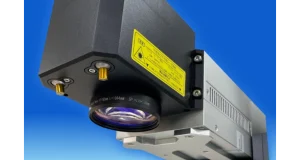Characteristics of Laser and laser optics
Compared with ordinary light, laser has the following characteristics:
1. High brightness
2. Good monochromaticity and directionality
3. Good coherence
In laser applications, the above characteristics of lasers are utilized separately. For example, laser welding utilizes the high brightness characteristics of lasers, while laser ranging utilizes the good directionality of lasers.
Laser Principles
A laser is a device that generates lasers. Regardless of the structure of the laser, it is always composed of three parts: the working material, the pumping system, and the resonant cavity. The pumping system transports energy to the working material, causing it to achieve particle inversion, while the resonant cavity continuously amplifies the stimulated radiation light, resulting in stable laser output. Various types of lasers are implemented by adding various devices based on the above three parts.
Types of lasers
According to the operating mode, there are continuous wave, single pulse, repetitive pulse, and wavelength adjustable lasers;
According to the excitation methods, there are optical excitation, electrical excitation, thermal excitation, chemical excitation, and nuclear excitation lasers;
According to different working materials, it can be divided into solid, gas, semiconductor, dye, chemical and free electron lasers.
There are many parameters for describing lasers, and the parameters that company personnel often come into contact with include the following:
Waist and spot radius
We often receive inquiries from customers about the size of the light spot, which actually refers to the waist diameter or waist radius of the light spot. The waist refers to the place where Gaussian light * * is transmitted in parallel, with * * amplitude as the origin, and the amplitude drops to 1/e times the origin. Due to the symmetry of Gaussian light about the origin, a circle is formed at 1/e, and the radius of the circle is the radius of the light spot at this cross-sectional area; If we take the cross-sectional area at the waist to examine, the radius at this point is the waist radius.
Divergence angle
Along the light spot, the envelope of the radius is a hyperboloid, and the hyperboloid has an asymptote. The propagation characteristic of Gaussian beam is that it spreads at a specific angle along the propagation direction at a distance. This angle is the far-field divergence angle of the beam, that is, the angle between a pair of asymptotes, that is, what we usually call the divergence angle.
Beam quality, M2 factor
The better the beam quality, the smaller the diffraction limit of the laser, which means that the size of the laser that may be focused is smaller. The M2 factor, known as the laser beam quality factor or diffraction limit factor, is a method of measuring beam quality, defined as:
numerical aperture
The light incident on the end face of the optical fiber cannot be fully transmitted by the fiber, only the incident light within a certain angle range can be transmitted. Half of the sine of this angle is called the numerical aperture of the fiber.




